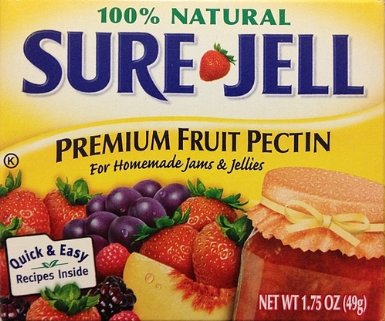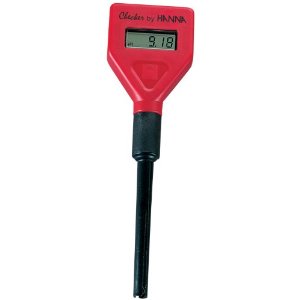I mentioned yesterday about “sources for safe recipes”, because unfortunately, the Internet is full of fools writing anything they they misheard as a kid is fact. And in canning, that can lead to very devastating results.
Another source is old family recipe’s handed down from generation to generation. Yes, they have sentimental value…but are they safe?
And to make matters worse, using an untested recipe doesn’t ALWAYS have bad results. In fact, more often than not, there are no negative affects. After all, nobody ever died from eating Grandma’s oven-canned cakes in a jar, right?
But the potential for bad results IS there without proper canning practices and recipes…
So why take the risk with an untested recipe when the end result is the same as playing Russian Roulette with your family’s health?
 I advocate the use of only tried and true recipes from valid sources. My Ultimate Source of all things Canning, is the Ball Blue Book of Preserving, as I’ve repeated time and again. These recipes have been tried, tested, and retested over the years, and have proven themselves with sound science backing the reasons why they work.
I advocate the use of only tried and true recipes from valid sources. My Ultimate Source of all things Canning, is the Ball Blue Book of Preserving, as I’ve repeated time and again. These recipes have been tried, tested, and retested over the years, and have proven themselves with sound science backing the reasons why they work.
I’ve used the BBB for years, and actually have two copies of it right now. It not only has canning recipes, both Boiling Water Bath and Pressure Canning, but it also includes drying, and freezing recipes.
I believe that the Ball Blue Book of Preserving should be the very first thing you purchase when you decide to start canning, even before any pots, pans, or even jars. It is THAT much of a quality reference.
 Our second most used source of recipes, and a very close second, I might add, is the fold out direction sheet inside each box of Sure Jell pectin (we prefer the low-sugar variety). Pectin is used in may jam and jelly recipes in order to ensure that the product will jell. Cooking strawberries with sugar usually yields just syrup. Add pectin in the proper amounts and at the right time, and you almost always get a jelled product- jam.
Our second most used source of recipes, and a very close second, I might add, is the fold out direction sheet inside each box of Sure Jell pectin (we prefer the low-sugar variety). Pectin is used in may jam and jelly recipes in order to ensure that the product will jell. Cooking strawberries with sugar usually yields just syrup. Add pectin in the proper amounts and at the right time, and you almost always get a jelled product- jam.
(I say always because sometimes things simply don’t go right. If it fails to jell, you can try reprocessing, or save what you have for pancakes.)
(Since I plan on walking you through the process for making jam on Friday, I suppose a box of Sure Jell would be a very adequate substitution for the BBB, at least until you get a copy of the book.)
The Sure Jell fold out contains directions for several products including “cooked” jams and jellies made from various fruits, as well as “freezer jams and jellies, also made from a large variety of fruits. The “cooked” versions refer to a canned, shelf-stable end product, while the “freezer” versions require no processing, but must be stored in the freezer. (Freezer version might make a simpler transition into making your own jams or jellies, but I PROMISE the “cooked” versions are just as easy, and have teh potential to store longer without electricity inputs!)
Other possible sources of safe, tested recipes would be any state extension office website. Most states also provide home canning resources, although much of it is simply the same publications being repeated from state to state. Sources of these recipes are usually colleges and universities that study food safety.
For instance, The University of Florida offer this website, chock full of useful information. Another source is http://nchfp.uga.edu/publications/publications_usda.html, offering downloadable PDF files.
The USDA also publishes the same information. It is almost all the same no matter where you find it, just packaged differently. The PROVEN information is out there. Why would you NOT follow the guidelines?
——————————————————————————
Now having said all of that in regards to using safe canning recipes, let me throw in a monkey wrench. Once you understand the science behind the recipes, and you have plenty of experience in making safe home canned products, you CAN start to ease into modified recipes of your own making. BUT you need to follow the guidelines.
To illustrate, I made several batches of hot sauce a few years back. Not following a recipe, I went by taste, all the while being sure to only use Boiling Water Bath ingredients, and to keep the acid level low enough to keep it under a pH of 4.6. This assured me that it would be a safe end product after canning it via a Boiling Water Bath for 10 minutes.
 How did I test the pH? I purchased a pH tester to verify before I processed my hot sauces.
How did I test the pH? I purchased a pH tester to verify before I processed my hot sauces.
‘By testing my product before putting it into the Boiling Water Bath, I was able to verify it had a pH low enough to classify it as a acidic food, and therefore leave me with a safe product.
Let me stress that this is NOT for a novice canner. You MUST know the hows and why’s of the science that keeps the food safe after processing.
And the only way to do that is to practice. The good news is that when you practice, you get to eat the fruits of your labors, so to speak.
Speaking of fruits, where do you get the raw products to make your canned items?
That is tomorrow’s post. You may be surprised as to how this Hillbilly manages to get fruit for preserving…. no dumpster diving involved!
Until then,
Peace,
db
As always, please “like” FloridaHillbilly on Facebook, subscribe to my feed, follow me on Twitter, add it to Google+, Pinterest, Linkdn, Digg, and/or tell your friends! The more folks that read this and learn how to can their own food, the fewer folks asking to borrow your Ball Blue Book of Preserving.
Need something from Amazon (and who doesn’t)? I earn a small commission from purchases made when you begin your Amazon shopping experience here. You still get great Amazon service and your price is the same, no matter what.
Somebody gets the referral fee, why not allow this old Hillbilly use it to help make ends meet?
One comment: